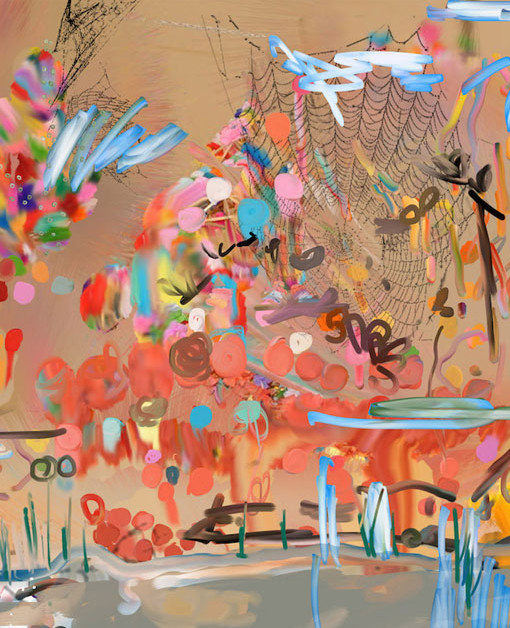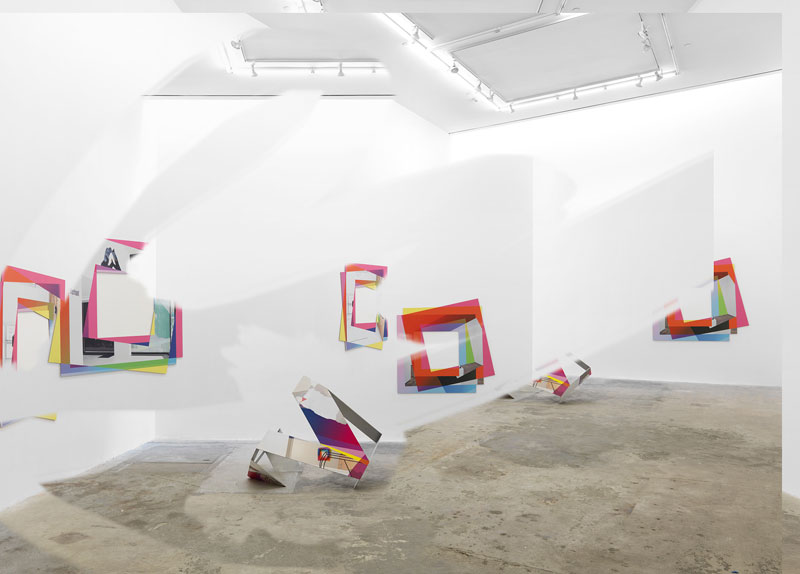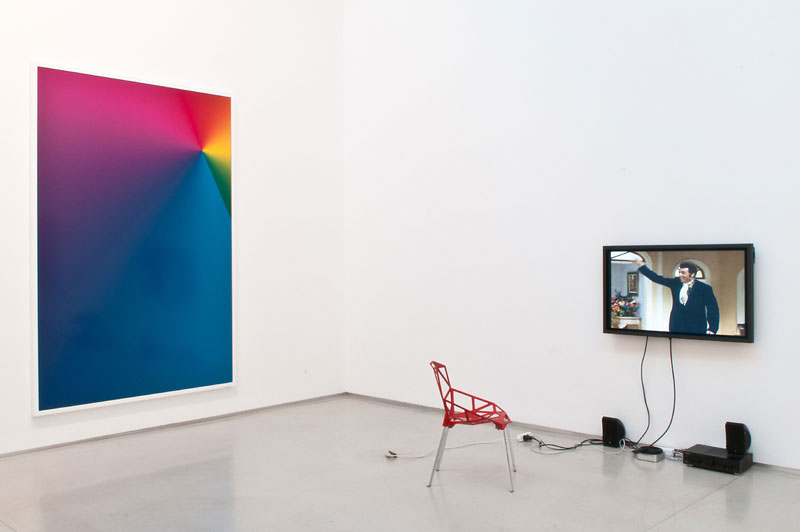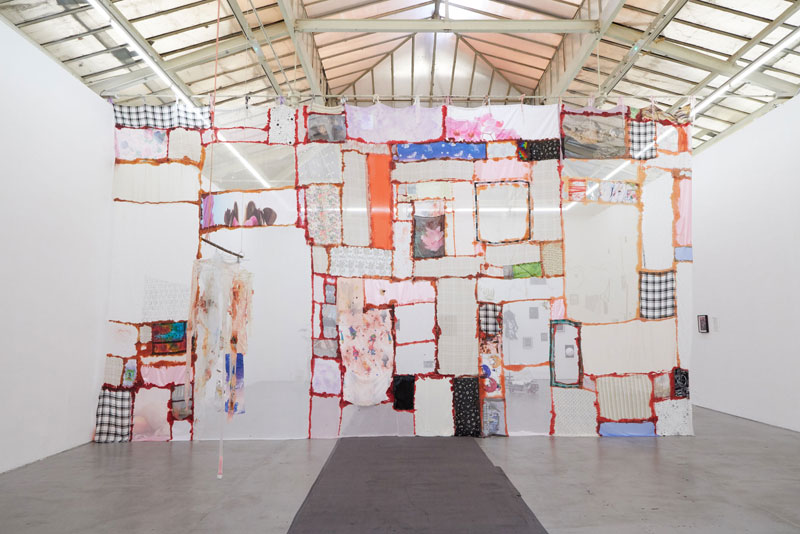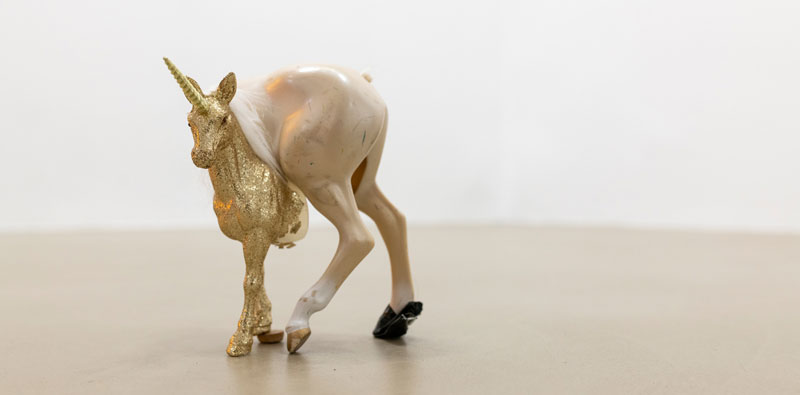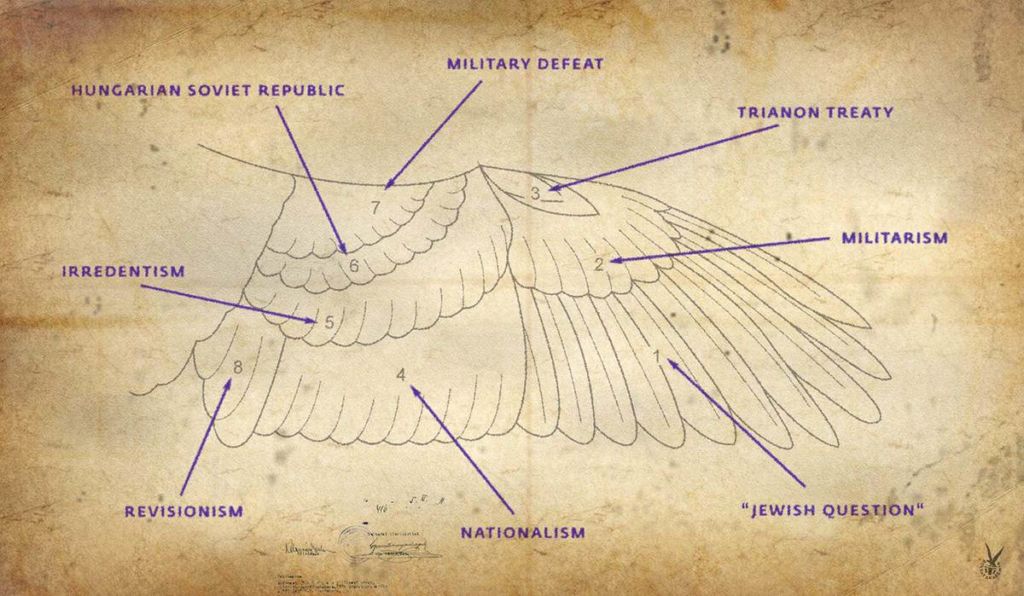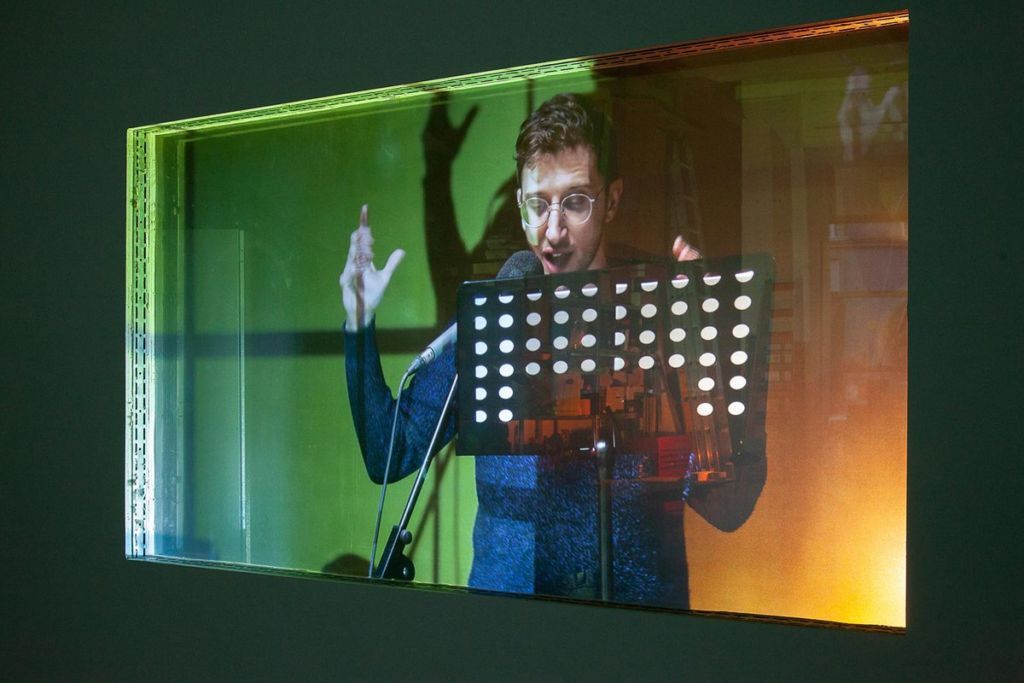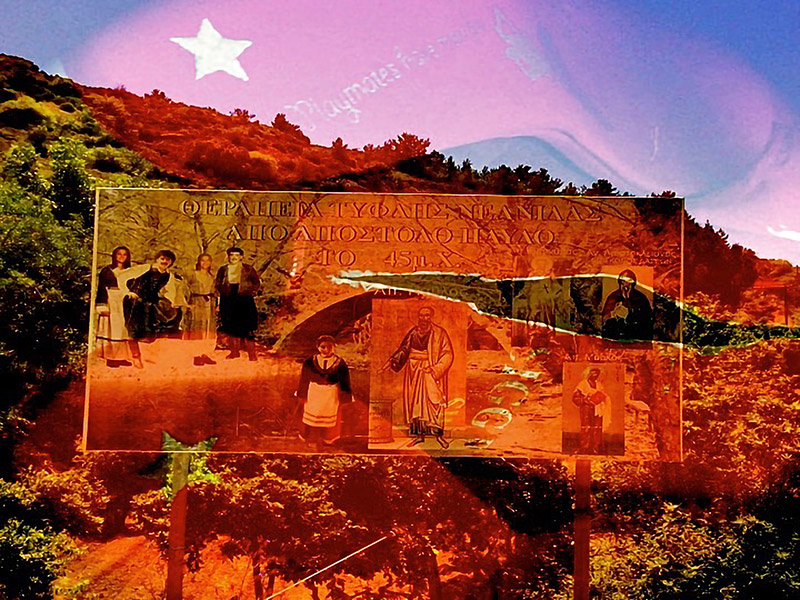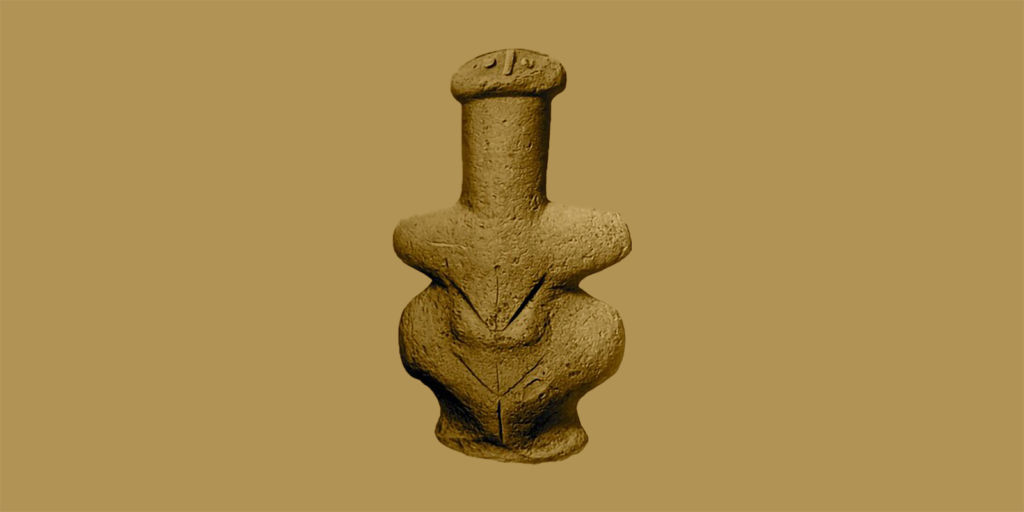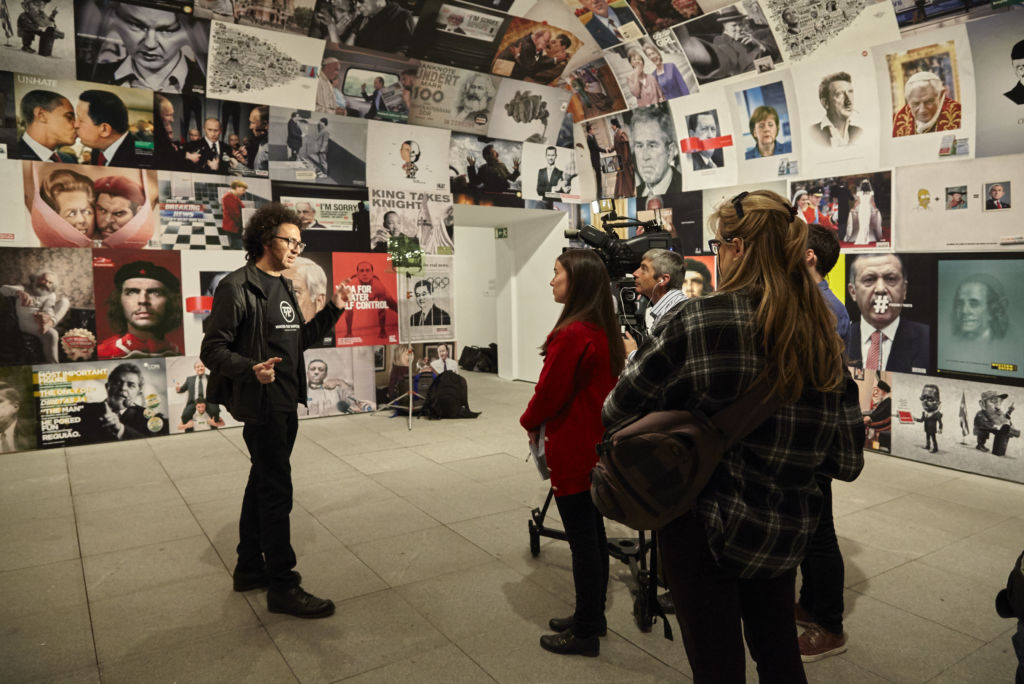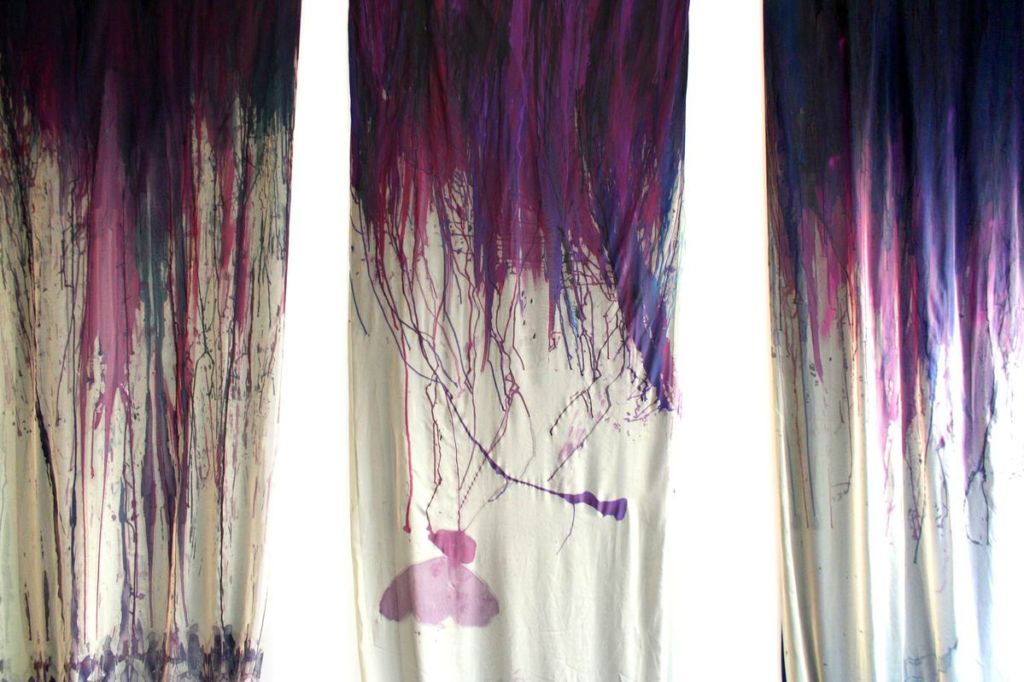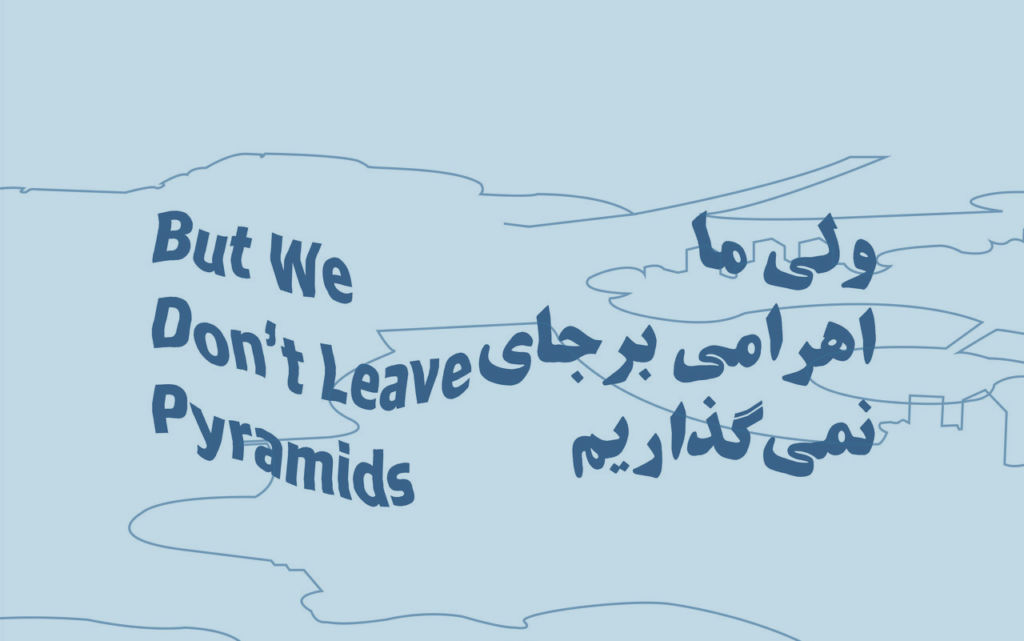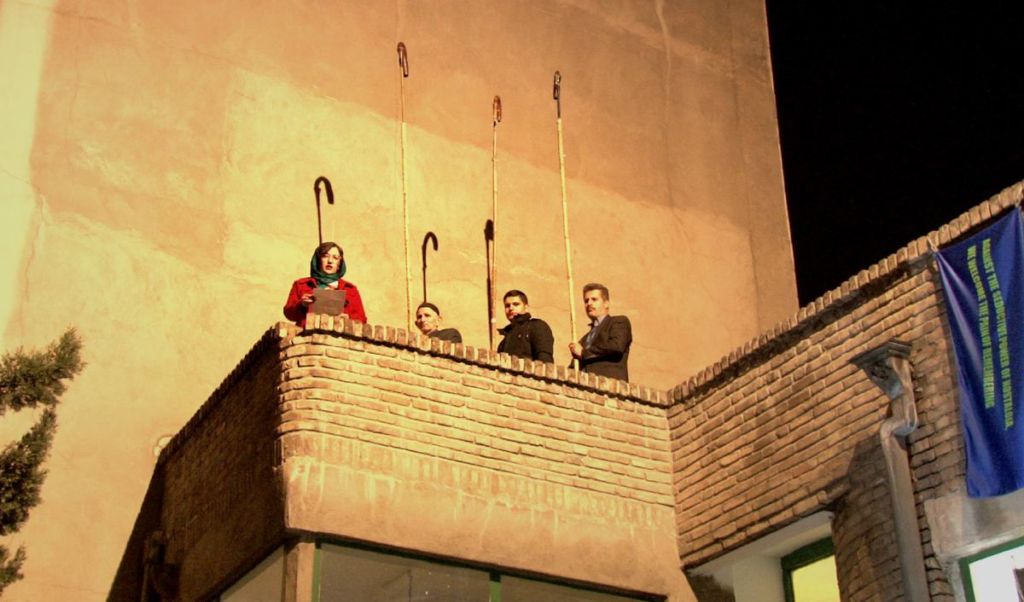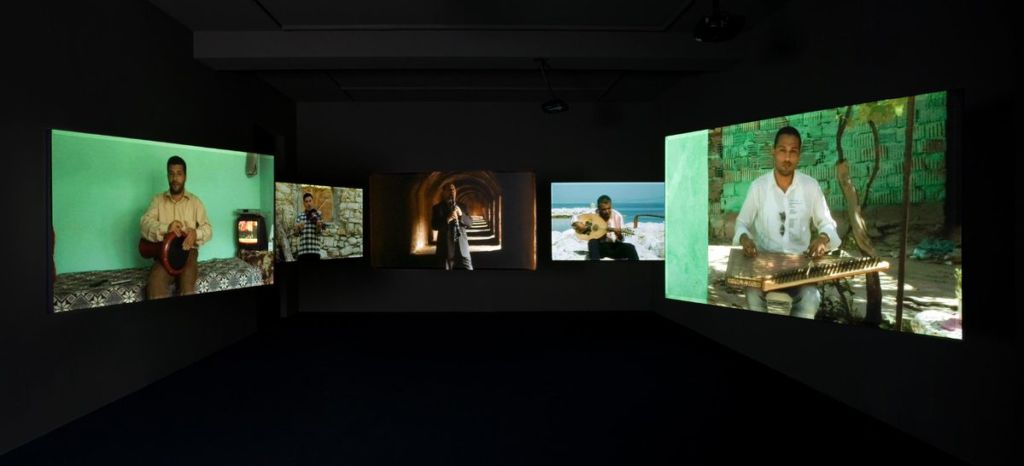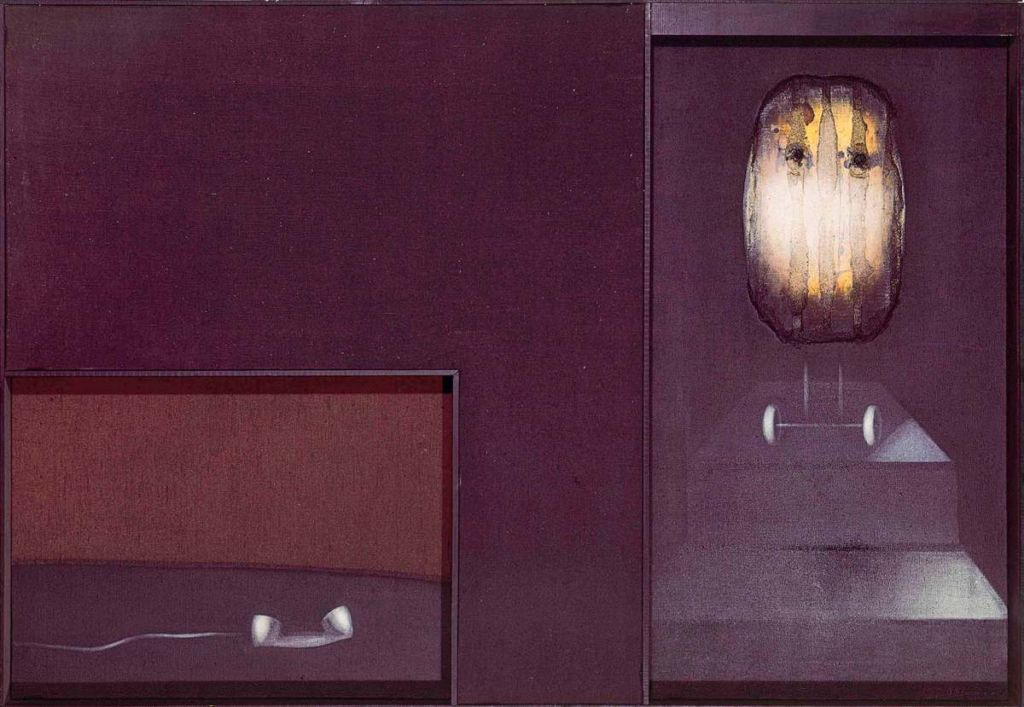About ten years have passed since the emergence of the Post-Internet movement. At a time when a devastating pandemic is raging, combined with global warming and generalised surveillance, its modus operandi has reached a new level and is being expressed both online and offline. Synthesis and diagnosis of a multimedium art, open to all hybridizations.
The world before the invention of the Internet? The Palaeolithic era! For the past two decades, the web has been an integral part of our mental and physical environment, serving both as a contextual support and as an immaterial structure in artistic practices, even more so in this time of forced isolationism. Its impact is no longer debatable, and we know to what extent social networks profoundly reconfigure our perception of reality. What’s more, they influence, shape or structure the resulting affects. For Generation Y artists, it’s no longer just a question of understanding the Internet as a tool or a medium, but as a sounding board for a collective memory, flooded with images and buried under an avalanche of disparate information. Confined before their time, these digital natives most often work from archives and databases scattered in the limbo of the network, mixing documentation and the act of creation. Although their notoriety rarely exceeds a confidential sphere – some claiming anonymity, true to the ethics of copyleft -, they glide back and forth between real and virtual, delivering a diffracted perception of the world.
However, the post-internet wave has gradually tapered off, a victim of its programmed obsolescence, in favour of a broader awareness of ecological issues and the major comeback of materiality. And against this backdrop comes the question as old as Deep Blue: do we use technology or does technology use us? At the dawn of super-intelligence and the full power of algorithms, this dialectical reversal is the vector for new strategies aimed at distorting the real and attributing a tangible form to the non-human. As the artist, filmmaker and author Hito Steyerl stated in 2013: “Data, sounds, and images are now routinely transitioning beyond screens into a different state of matter. They surpass the boundaries of data channels and manifest materially.”
Digital debris
Marked by an archaeology of the future and hauntology, a notion defined by Jacques Derrida, the decade 2010-2020 saw the emergence of aggregates of new forms, where the sediments – sounds as well as images – from a recent technological past are reincarnated in a spectral envelope. The context of the gallery and physical objects are replaced by a virtual non-place, peculiar to erratic surfing on the Internet where gifs and memes proliferate. At the same time, we see the return to favour of low-tech or no-tech mediums, formerly considered obsolete and excluded from industrial commercialisation. Like the sizzling electric field in the third season of Twin Peaks, a doorway to the reverse side of reality, Post-Internet art – a name applied to the artist and curator Marisa Olson in 2008 – reflects this new paradigm. Between digital pop culture and conceptual art, this aesthetic draws on the distortion of mass culture and the most familiar elements of our “connected” environment, while incorporating research in the field of ecology, semiology or epistemology. But what’s the point of inflicting the prefix “post-” on ourselves when we are only at the beginning of the next world?
In its first issue, dated April 2019, the French magazine Radial retrospectively tried to identify what this term covers, at a given moment when Internet use is becoming commonplace with the generalization of social networks and the rules imposed by the GAFA that block its subversive scope. “One could say that the post-Internet refers to the moment when the Internet is so much a part of our existence that it no longer seems to be something exceptional. Here, the Internet is no longer envisaged in its pure technological component but encompasses the uses of this technology: sharing of files, images, information, sites of sociability and/or power, ways of envisaging and appropriating works (from “traditional” arts to television series), creative tool, etc. To put it another way, the post-Internet refers to the time when using the Net becomes as banal as using a pencil in the past, a time when “the new technologies” are rid of their a priori technological aspect”. Artists like Jon Rafman, Artie Vierkant, Katja Novitskova, Petra Cortright or Cory Arcangel, to name only the most renowned, see the web as both a field of semiotic investigation and a conceptual toolbox.
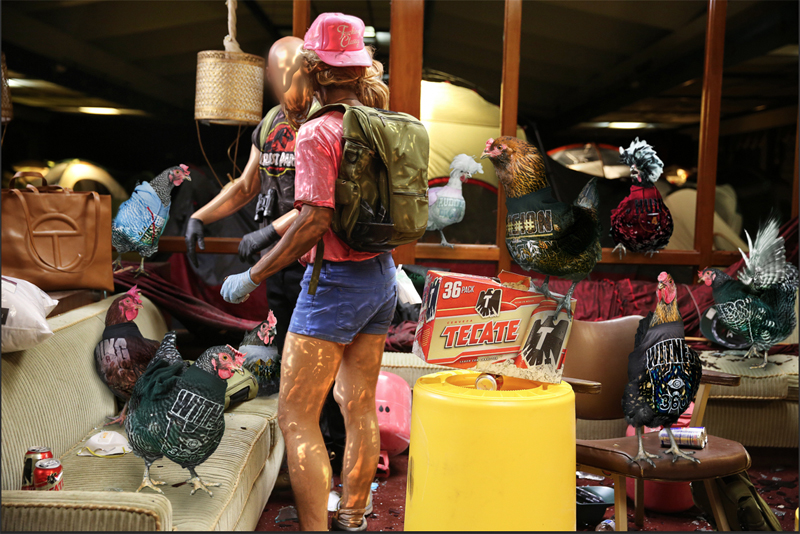
Ryan Trecartin (& Lizzie Fitch), Site Visit, installation, sound and video.
Camp cyberculture
Following in their footsteps, a generation of artists emerging from alternative subcultures has cultivated a tainted surrealism, where irony mingles with creepiness. A camp cyberculture, gross and deliberately screwed up, is lurching its way through the mysteries of the web. Just as the Canadian collective General Idea hijacked television culture for queer and political activism in the 1980s, Lizzie Fitch and Ryan Trecartin’s video installations seize the world of media, advertising and sitcoms to highlight their absurdity. Structures within structures or “sculptural theatres”, their devices relate to a truncated narrative, where meaning depends on nonsense. Creating confusion between excessive parody and the first-degree is undoubtedly one of the most striking symptoms of this art of diversion. As if the layers of irony, repellent vulgarity and strangeness were finally collapsing to reveal a form of sincerity and transposition of the most intimate experience.
A similar mind set appears in the shows broadcast on the internet channel Adult Swim, with bad taste geniuses Tim & Eric (Tim Heidecker and Eric Wareheim) as their most illustrious representatives. Other independent channels on the net embody the essence of this scathing humour, bordering on a psychedelic bad trip. Plunging into the horrors of amateur films shot with the first consumer camcorders, the site Memory Hole combines a series of VHS found footage created by the Everything is Terrible! Collective, whose ultimate goal is to build a giant pyramid in the Nevada desert, entirely made from VHS copies of the film Jerry McGuire with Tom Cruise! Last but not least, the Uncle No Rules Show, streamed on YouTube in 2018 and supposedly for children, is quite a treat in the freaky league. Have the heirs of the 1990s overcome the institutional mechanisms of contemporary art?
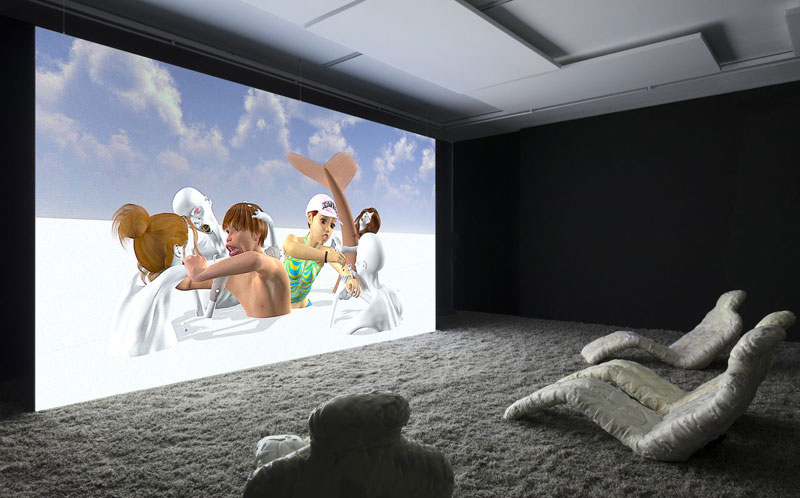
Jon Rafman, Dream Journal 2016-2017, Colour HD video with stereo sound. Music by James Ferraro and Oneohtrix Point Never. Courtesy the artist and Sprüth Magers.
Post-cinema
Abandoned by their users, video games from a bygone era – Mario, Sonic, Sims, Second Life – have resurfaced as spooky topography. The most outmoded virtual worlds are revisited as non-places conducive to stirring ontological debate. The animated films designed by Bertrand & Arnaud Dezoteux, Julie Béna (video installation Anna & the Jester) or Benjamin Nuel (the series Hotel) are based on this dialogue between primitive 3D animation and reflection on the political history of forms, design and architecture. Uncanny valley plays tag with cinematic form. In a more satirical vein Emilie Brout & Maxime Marion’s videos re-appropriate the contents of image banks to divert them. Whether they revisit the locations of classic films in their Google Earth Movies, or stage themselves in pastiches from corporate clips, everything is channelled toward creating confusion between real and fake.
At the same time, there is a trend taking filmic narrative beyond the screen, in an augmented reality that no longer consists solely of virtual landscapes, but of recycled industrial materials arranged within a highly concrete exhibition space. Metal gantries, customized cars, epoxy resin and building site cladding are the mediums in which Neil Beloufa’s films are set, while in Julien Creuzet’s work, reminiscences of Creole culture collide with virtual reality. Rituals, songs, dances, poems and fetishes are transposed to the era of Instagram stories and post-colonialism, in assemblages of moving objects, sounds and images. Joined together in the shape of island modules, they form an “archipelago opera” that materializes the artist’s mental space.
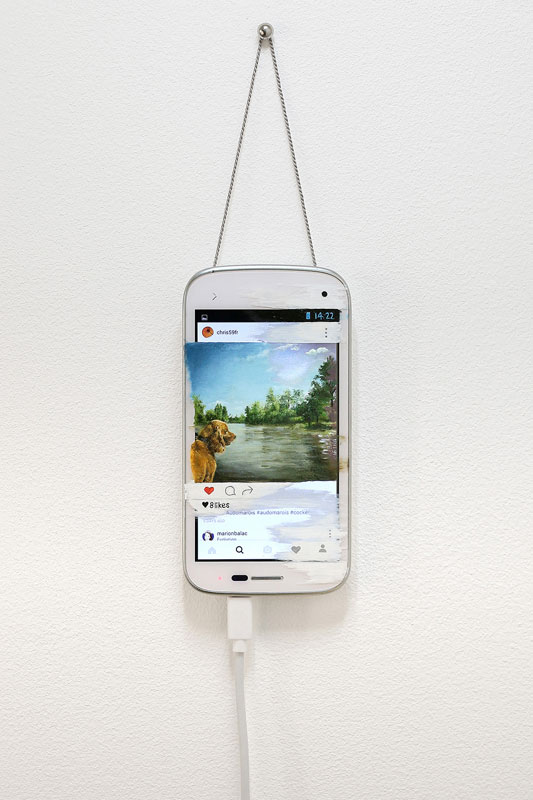
Emilie Brout & Maxime Marion, Paintings, 2017, oil on mobile phones, twisted silk cord, dimensions variables
For writer Dennis Cooper, a long-time collaborator of playwright and choreographer Gisèle Vienne, animated gifs replace text in the horror story Zac’s Haunted House, which can be downloaded for free. Inherited from postmodernity, the play of borrowings, quotations and visual re-appropriations supplants ex nihilo literary creation. As the pioneer of net art Gregory Chatonsky reminds us “Post-Internet is a formal style where originality is not the expression of a singularity, but a resemblance that spreads itself across the network”.
From glitch to kitsch
Music is no exception and plays an important part in this digital environment. A sound extension of post-internet art, the Seapunk and Vaporwave currents, now a little tired, bring together all the sound features of the late twentieth century. In June 2011, all it took was a tweet from user Lil Internet: “SEAPUNK LEATHER JACKET WITH BARNACLES WHERE THE STUDS USED TO BE” for the imagination of an entire generation to start babbling about aquatic cyber-pop-art. The joke went viral, a bunch of geeks seized the expression and took it literally, tinkering with rudimentary software to make collages from open source image and sound banks. With rare exceptions, the music itself is of little interest, but it has an appetite for reference conglomerates. Ambivalence reigns, as its adepts play on irony and ultra-regressive kawaii imagery: iridescent digital wavelets, dolphins galore and blue-violet hues embody its aesthetic (anti-)canons. With seapunks, all manner of retro-kitsch quirks are excavated from the Internet and placed on the same plane: Windows 95 wallpaper, a flashy VHS tape, office graphics from another age, MTV-type jingles with a graphic palette, animated gifs like Tumblr and 4chan, 3D typography rotating in space, primitive video games or new age esotericism worthy of a Raelian seminar. The whole is enhanced by the accompanying look: (de)coloured hair, clothes with fluo patterns and androgynous physiognomy.
This all-purpose kitsch blended with hedonistic frenzy traces the history of consumerism and its attendant technology, while at the same time trying to get away from it. The DIY scene – which is just as much a fashion phenomenon – achieved its 15 minutes of mainstream glory, attracting the attention of M.I.A., Rihanna, Azealia Banks and Grimes who quickly absorbed its attributes. The Marseilles-based seapunk duo Ideal Corpus – disbanded in 2016 – neatly sums up the limits and ambitions of this post-digital utopia in an interview given to the website of the newspaper Ventilo in 2012: “In the digital age, as the Internet opens up unlimited possibilities for information storage and exchange, we have palpable and immediate access to the past. After that, what do we retain? I think it’s about transforming reality, shaping history.”
Pop compressionism
Always one step ahead of the game, the Scarlatti of the synthesizer, Daniel Lopatin, better known under his stage name Oneohtrix Point Never, set out the sound landmarks of this art of remanence as early as 2008. Author of a dozen albums and signer of soundtracks (notably for films by Sofia Coppola and Josh & Benny Safdie), Lopatin quickly moved away from the clichés of the Vaporwave and Seapunk scenes that branched out after him in the meanders of the Internet and which he helped to shape. Ever ready to bounce back on new ideas, Lopatin initiated a neo-baroque movement which he called “Compressionism”. As he explains in an interview given to the Interview Magazine website in December 2018, it is “basically a way of harnessing an overflow of images that are there to either titillate you or to make you feel bad about yourself, whatever they’re there to do. It’s a way to conquer all of these inputs. It’s about organizing and sort of re-appropriating things that you don’t want necessarily and seeing them in a way that is personal.” He went on to deplore the rampant anti-intellectualism on social networks and the depth of reflection that is diminishing as the Internet levels down, a victim of ideological formatting and the hysterisation of affects via the screen.
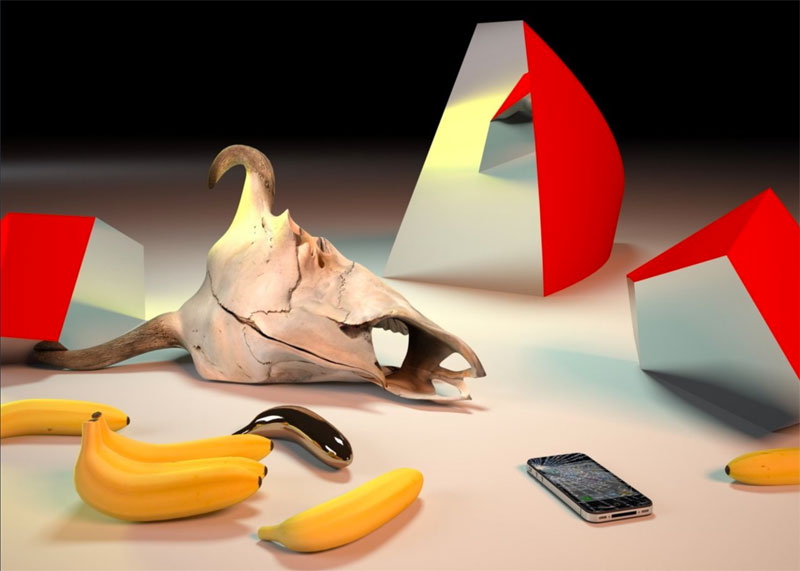
Takeshi Murata, Golden Banana, pigment print, 30 x 42 in, 2011
Pushing high-tech pop experiments still further, the collective and label PC Music – founded by producer A.G. Cook – is spreading its transgender cyber pop stars (Sophie, Hannah Diamond, Princess Bambi, Charli XCX). It’s hard to know if they’re real or fabricated, in the vague mix of neo-situationist performance, queer activism and first-degree “hit songs”. Inspired by J-Pop, hi-NRG and white-heat turbine sound design, the music is of varying interest depending on the project. Accompanied by clips distorting commercial standards, it explodes in bursts and adopts mutant forms. Pushed to the height of hysteria and excess, this pop culture with emancipatory tendencies is consumed and consumes itself at the speed of an Instagram thread, at the risk of aging as badly as an over-chewed piece of gum.
Another priestess of post-Internet music, Holly Herndon uses the latest technology and artificial intelligence to construct generative music, interacting with real-time visual devices (such as walking remotely through a virtual simulacrum of her own apartment). Advocating technological positivism, Herndon challenges the idea that online life is less valuable than real life, just as she opposes the idea that the laptop is less valuable as an instrument than a double bass or a piano. Cold and cerebral, her approach to sound art maintains a critical distance from the hedonism of dance music, without abandoning its rhythmic patterns. Seeing her laptop as the most intimate of objects, she has fallen in love with sounds that can provide a “sensory-auditory orgasm”, as described by members of the ASMR (“Autonomous Sensory Meridian Response”) community. Whispers, friction and clicks form the matrix of her recent productions, the basis of a social and political commentary.
Hybrid bastards
At the same time, we see practices and mediums opening up, giving pride of place to a form of nostalgia for the pre-Internet years. In the white cube of the galleries, assemblages of recycled materials and forms emerge, seeking to rematerialize dematerialization. Emancipating themselves from liquid flow and empty scrolling, artists once again feel the need for manual shaping and contact with the organic world. We see a burgeoning art that has gone back to the basics of “doing”, materiality and craftsmanship, after having transited through virtuality. From IRL (“in real life”) image-objects to haptic devices, the artists now proceed by re-appropriation, distortion and stratification of fragments scattered in multiple temporalities, trying to reinject (non-)meaning where chaos reigns.
As such, the chemical hybridizations of Mimosa Echard or the trompe l’oeil installations of Emmanuelle Lainé are emblematic of this transitional state from digital to organic, from reality to its representation, in an attempt to decode the world ontologically.
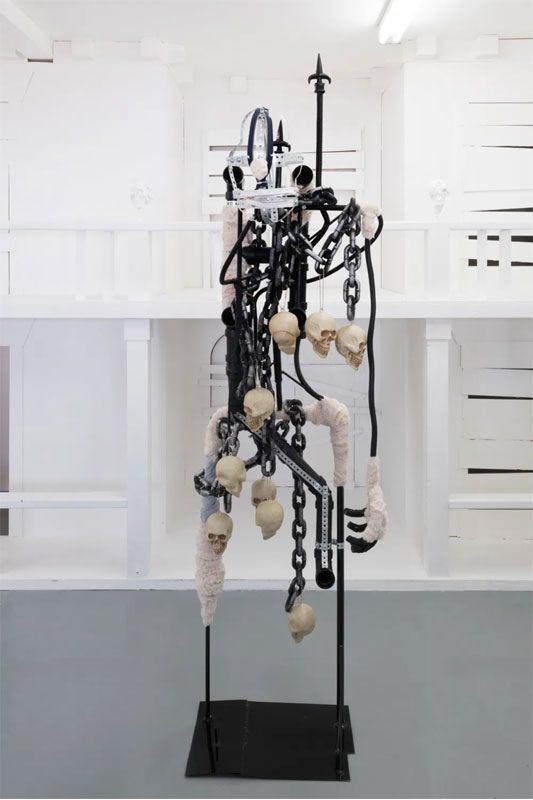
Renaud Jérez, Narcissism and depression, mixed medias, 2017
Plants, minerals and industrial furniture converge without hierarchy in artificial environments with high allegorical content. In Emmanuelle Lainé’s installations, simulacra generate a vertiginous mise en abyme, while Mimosa Echard envisages an “after” world, like molten magma, where augmented humanity is not embodied in the fantasy of an omnipotent android, but rather in the realm of witchcraft, occultism and magic potions. The ultimate stage of technology, as invisible as a virus? In any event, it’s about turning the unknown into an ally, of trying to lay bare the mysteries of quantum physics and cognitive mechanisms. We’re no longer in the domain of representing an object or a meaning that is immediately identifiable as such, but of redefining the ecosystem.
As the artist David Douard sums up so well in the magazine Zérodeux, “[his] generation is made up of true hybrid bastards, who do not establish any hierarchy between sources, be it art history or popular culture. This nameless mixture is something I really like to look at, because nothing really works, and nothing is really valid. It’s all being written. (…) I belong to a generation that doesn’t care about a lot of things. Things just come out, spread out in front of us, and they take on the meaning that we give them.” Through a boomerang effect, reality is making a strong comeback in contemporary creation, and technology – the crutch of an increasingly impoverished imagination – now serves only to graphically reshape the world around us. A mate of Douard’s, the artist Renaud Jérez reincarnates disembodied bodies from accessories and industrial materials (PVC, latex gloves, sports sneakers …). Made of cables and pipes, plaster and Plexiglas, his skeletal puppets appear like avatars whose artifices have been stripped away: bionic man is no longer the pinnacle of high-tech technology, but a “robot-mummy” whose only remaining parts are disarticulated appendages, bodiless organs that blend into the decor like pieces of furniture. This way of reconfiguring the real is the pull factor of radical denaturation that no longer seeks to distinguish between nature and culture, organic and artificial. New trends are forming, placing the living back at the centre of creation in an anarchic and decomplexed maximalism that owes as much to Mike Kelley as to cyberpunk and cheesy, low-budget sci-fi.
Strange strangeness
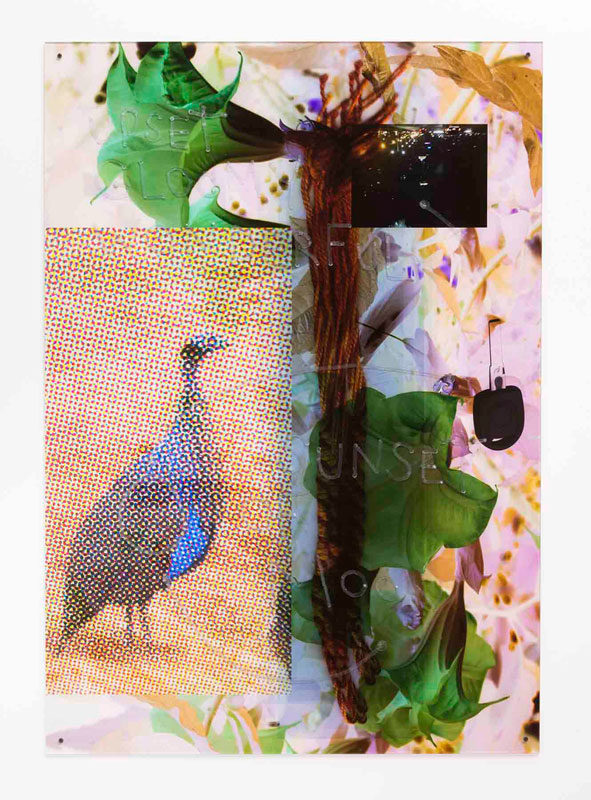
Julien Creuzet, upset, gloomy, wonderful sunset of moon (2017), archival pigment print face mounted to acrylic with custom engraving, courtesy of the artist & Document Gallery
A new ethic has arisen from this horizontal syncretism, not from ” all things are equal “, but from the intuition that beings are multiple and that high and low culture prove to be equally enriching. To the supposed authenticity of anthropological naturalism, this community of ideas opposes an ecological artificialism that finds its source not in social determinism, but in the very redefinition of the codes of identity and gender. As stated by Timothy Morton in The Ecological Thought, “It isn’t hard to love Nature as a reflection of oneself. It isn’t hard to love Nature as an awe-inspiring open space. It’s far harder to love the disturbing, disgust¬ing beings who do not so easily wear a human face (…) One task of the ecological thought is to figure out how to love the inhuman: not just the nonhuman (that’s easier) but the radically strange, dangerous, even “evil.” For the inhuman is the strangely strange core of the human”.
In the space of fifteen years, the world has been plunged into the Uncanny, which is amplified by social networks. We now live in a state of permanent storytelling that has caught up with the most far-fetched fiction. From this point on, how do we position ourselves towards both reality and what escapes it? Is our consciousness still capable of sorting through it all? As Katka Novitskova, pioneer of post-Internet art and co-author of the Post-Internet Survival Guide (2010) professed: “The notion of a survival guide arises as an answer to a basic human need to cope with increasing complexity. In the face of death, personal attachment and confusion, one has to feel, interpret and index this ocean of signs in order to survive.” Ok boomer?
Translation by Angela Kent Cover picture : Petra Cortright, untitled, digital painting on anodized aluminium
